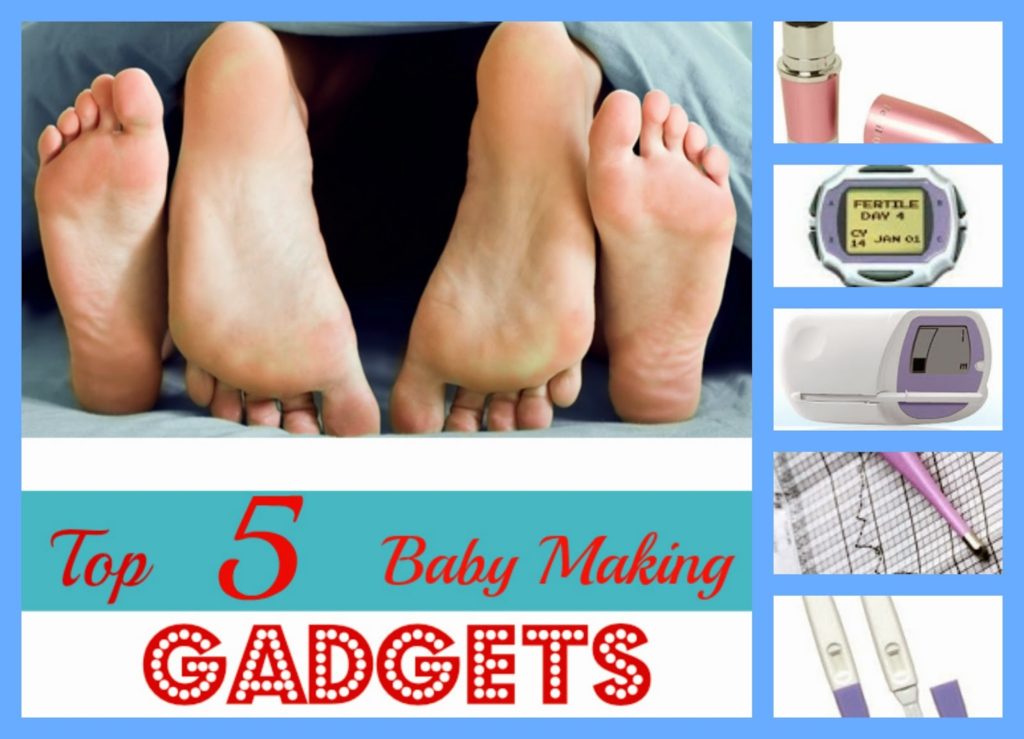
When it comes to conception, lying back and thinking of England is SO 1900s. Now consumerism informs us that we NEED gadgets to help us put peg A into hole B. Despite what the charming guests on Jeremy Kyle may depict, baby-making is actually a technical art form. A woman is only fertile for a day or two each month. This is because once her ovary has released an egg, the little tinker only has a life span of approximately 12-17 hours before it dies. Never mind, Capitalism to the rescue! Check out the array of gadgetry created for the sole purpose of increasing the population.
5. Ovulation Microscope
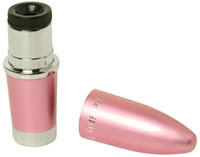
Just like a dildo but with much less functionality. The lipstick-sized contraption you see in the picture is called “Julia” and it’s a load of crap. How does it work? (and I use the word ‘work’ lightly). The manufacturers tout that, “It could not be simpler – just add a little saliva to the top of the unit and observe through the included microscope the structure of the saliva”. So you unscrew off the top and gob into the lens, then you wait the prescribed “10-15 minutes” for it to dry. Then you wait some more, because it hasn’t dried. Then you resort to leaving it over night to dry. When it’s finally dry you peek through the tiny window and press a small button which causes a light to blind you. The manufacturers claim that this product has a focus, but they’re quite frankly talking bull. Turning the plastic top is meant to adjust the focus but all it does is move the lens around. The quality of this product would make Poundland blush. The theory is that if you’re ovulating your saliva will form crystals on the microscope. Sounds like fun right? And it is, for the first few times until you realise that nothing is ever going to fecking happen. On the plus side, it can be used an unlimited amount of times which is great if you like spitting on things and watching nothing happen.
Value for Money: 2/10.
Accuracy: 2/10.
Fun Factor: 4/10.
Involves peeing on something: No.
4. OvWatch
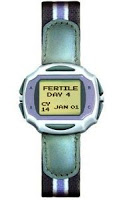
Currently only available in the States the snazzy-looking OvWatch takes readings from your skin every 30 minutes during the night to track your body chemistry (read: sweat). The instructions are clear, “Just wear the watch at night while you sleep knowing that you will be alerted 4 days before ovulation, giving you plenty of time to plan multiple romantic interludes if desired”. Four whole days!! Which TTC woman’s heart doesn’t leap at the sound of that? However as one Amazon customer commented “once the watch detects the change in your sweat it goes on auto pilot, meaning it will cycle through four “fertile” days, two “ovulation” days and then two “less fertile” days. I suppose if every woman’s body was that exact and consistent and the watch was accurate, that might work…”
But accuracy is not OvWatch’s strong point. Nor is durability. After each cycle the watch’s sensor must be replaced, and at $30 per sensor and $125 for the watch itself, it looks like the manufacturers of OvWatch know how the exploit the TTC crowd. What’s more is that the sensors do not stay in place and there is nothing to hold them in place. Furthermore you must keep the watch on TIGHT to avoid it moving around throughout the night. Hello carpal tunnel syndrome!
If, or should I say when, you discover that you are displeased with the OvWatch you’ll be delighted to know that there is a returns policy. But it is completely useless. The item must be returned within 30 days of purchase. You quite rightly order the OvWatch ahead of time in preparation for the beginning of your cycle, however you cannot return it after figuring out it is worthless, because you just can’t figure that out in 30 days or less.
But wait, the best feature of this product is yet to come. There have been reports of OvWatch notifying its owner of their fertile period even when its owner was not wearing the watch!! Either the sensors have one hell of a range or I smell a scam. It’s been suspected that once you program your cycle length into OvWatch the device simply counts to the middle of your cycle and estimates ovulation. Even your dog can do that! And everyone who has ever read The Bible (aka Taking Charge of Your Fertility) will know that ovulation does not always occur smack bang in the middle of your cycle. My advice is to save your $125 for one of the more worthy gadgets bellow.
Value for Money: 1/10.
Accuracy: 3/10.
Fun Factor: 3/10.
Involves peeing on something: No.
3. BBT Thermometer
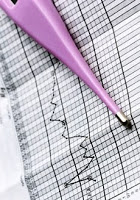
This is the Granddaddy of baby-making gadgets. Like the OvWatch, the BBT thermometer let’s you track your fertility without even getting out of bed. Unlike the OvWatch, the BBT thermometer actually works. And what’s more, it’s cheap as chips! A fiver for the thermometer and away you go.
BBT stands for Basal Body Temperature. This is your temperature immediately after you wake up in the morning, before you do anything. A woman’s basal temperature changes in a regular pattern throughout her cycle, based on hormonal changes in her body. Tracking your temperature is a way of tracking your reproductive hormones, and thereby knowing just where you are in your cycle. Ovulation is indicated by a significant thermal shift in your temperature followed by sustained high temperatures for a week or so then a drop back down if you’re not pregnant.
You must take your temperature at the same time every morning for accuracy’s sake. Just insert the thermometer into your mouth, or if you feel so inclined you can insert it into your anus or foof; I’m not judging. Then plot your temperature onto the chart that comes free with the thermometer. If you can’t be arsed messing around with your pens and a paper chart, may I recommend a site like Fertility Friend which will do all that maths crap for you.
The BBT thermometer is different from an ordinary household thermometer used for detecting fever. It detects smaller changes in temperature, even fractions of a degree. It is a good way of showing when conception has occurred – your temperature stays elevated when it would otherwise drop. Here’s my chart from the cycle where I conceived my recent pregnancy. Notice that the second half of the graph is elevated and stays elevated:
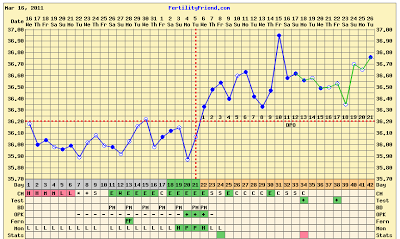
I know what you’re thinking, it looks like something a physics professor might use, but fear not, you’ll get the hang of it after a cycle or two. Charting will soon become second nature and more addictive than crack.
On the downside, what if you need to wee in the middle of the night? You get out of bed and wee but then your morning temperature is botched. This is because you must have at least 3 hours of solid sleep prior to taking your temperature. The activity involved in getting out of bed can raise your body temperature and skew results. So you lie in bed for hours with a full bladder, praying yourself to sleep and waiting for temperature-taking-time, only to develop a unitary tract infection in the process.
Another reason why this traditional method failed to nab first place on this list was because it can only tell you that you have ovulated AFTER the big event. Which really doesn’t help in pinpointing when you should get your freak on.
Nevertheless, using a BBT thermometer can teach you a lot about what happens to your body throughout your cycle. In doing so, it can also help uncover certain fertility issues such as “luteal phase defect” (where your period arrives so soon after ovulation that any fertilised egg would not have time to implant).
Value for Money: 9/10.
Accuracy: 8/10.
Fun Factor: 8/10.
Involves peeing on something: No.
2. Ovulation Predictor Kits (OPKs)
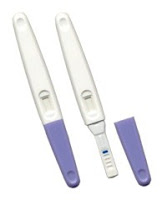
If you love peeing on sticks – and let’s face it, who doesn’t enjoy the satisfaction of urinating all over something you just purchased from a shop – then Ovulation Predictor Kits are your new best friend. Unlike the BBT thermometer, OPKs can tell you when ovulation is about to occur, which means that you can plan your baby-dancing to perfection. These little soothsayers work by detecting a hormone in your pee. Your body produces something called luteinizing hormone (LH). It is present in your urine almost all the time, but increases significantly (surges) about 12-36 hours before ovulation. An OPK detects LH in your urine and gives you a positive result when it detects this surge. So when you get a positive test, it’s time to get your sex on.
These bad boys come in a range of styles to suit every budget. From so-called “internet cheapies” to digital piss-takers and everything in between (dippers, midstream, cassette). Each box contains several tests. You will use about 5-10 tests each cycle depending on the length of your cycle. Yes, this means you get to pee on a lot of sticks! But don’t do it in the morning because LH is naturally high at this time of day and you could get a false positive result, thus knackering your poor husband before the real window of opportunity opens. Instead, take your daily OPK around midday.
There’s a snag though. It is possible (though rare) to get a positive OPK result and yet fail to ovulate. This happens when your body “gears up” to ovulate, leading to an LH surge – and then, for some reason (such as stress, illness, travel, or random fluke), your body fails to release an egg. When this happens, your LH surge will dissipate. Once the stress is resolved, your body will try again. This can happen more than once per cycle. Therefore, there is no way to be sure you ovulated, even if you had a positive OPK (more information can be found at the wonderfully addictive site: peeonastick.com). For this reason I suggest using OPKs in conjunction with a BBT thermometer.
Value for Money: 6/10.
Accuracy: 7/10.
Fun Factor: 8/10.
Involves peeing on something: Yes.
1. Clearblue Fertility Monitor (CBFM)
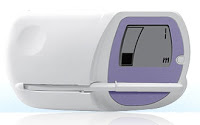
The CBFM has the same soothsayer qualities of the OPK but with an added bonus – this bitch is electronic!! What’s more, in addition to measuring LH, it measures oestrogen. The oestrogen hormone also rises prior to ovulation, usually a day or two before LH surges. Therefore, the CBFM can detect more subtle changes in your fertility than OPKs. The device reads tests sticks (yes more peeing involved) and will produce either a “Low” (both LH and oestrogen are low), “High,” (oestrogen is increasing, LH is increasing but not yet surging), or “Peak” (LH is surging and oestrogen is high) result. It’s best to ask your husband for a deposit of the good stuff on high and peak days.
To use the monitor just switch it on every morning (unlike OPKs the CBFM wants your first wee of the day), wait for it to request a test stick, wizz on a stick, then insert the stick into the monitor. After a few seconds it will tell you whether or not your husband will be getting lucky tonight.
As well as saving you from the hassle of having to read your sticks (taxing I know), the CBFM also has a “memory” and “learns” your cycles so you don’t have to write anything down. Also, it will count the days and tell you which days to test; It will warn you when your period is due; It will tell you when you should take a pregnancy test; It will make your dinner. (That last one is just a guess but based on prior performance it’s pretty much a cert).
The monitor itself is a bit pricey. I purchased mine for £100. Then the test sticks come in at £20 per pack. But no one said having a baby was cheap. You may as well get used to buying unnecessary gadgets now because you’ll find yourself buying them in abundance when you’re up the duff.
Value for Money: 5/10.
Accuracy: 8/10.
Fun Factor: 9/10.
Involves peeing on something: Yes.










